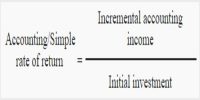Dividend policy means how much dividend would as a retained in a company and how much distribute to stockholders. All these related activities of the dividend are called dividend policy.
The corporate, institutional and legal factors that influence the dividend decision of a firm include the growth and profitability of the firm its liquidity position, the cost and availability of alternative forms of financing concerns about the managerial control of the firm, the existence of external (largely legal) restriction and the impact of inflation of cash flow.
Factors that influence a firm’s Dividend Policy Decision
(a) Growth and Profitability: The amount of growth a firm can sustain and its profitability is related to its dividend decisions, so long as the firm (because of managerially imposed to external market constraints) cannot issue additional equity.
Firms with strong growth prospects maintain low target payout ratios. In fact, all the firms that experience above-average growth rates are expected to have low dividend payout ratios since, in line with the residual theory of dividends, a greater number of profitable investment opportunities should result (other things being equal in a greater need for earnings retention.
This interrelationship among the firm’s growth, its profitability, and its investment, financing, and dividend decisions cannot be overemphasized.
(b) Liquidity: The liquidity position of a firm is often an important consideration in dividend decisions. Since dividends represent a cash outflow, it follows that the better the cash position and overall liquidity of the firm, the greater is the firm’s ability to pay (and maintain) a cash dividend.
A growing, profitable firm may not be liquid since it needs funds for new capital expenditures and to build up its permanent working capital position. Likewise, firms in cyclical industries may experience times when they lack liquidity due to general economic conditions. Hence, the degree of liquidity is a variable of concern when a firm’s dividend policy is being assessed.
(c) Cost and Availability of Alternative Forms of financing: The ability of a firm to raise money externally will have a direct bearing on the level of dividends paid to shareholders. Clearly, a company that has easy access to the capital markets, and that can conveniently and economically raise funds in a number of alternative ways, will have greater latitude in setting dividend policy than a firm that has to rely heavily on earnings retention as a source of financing.
In essence, the key question is whether or not a firm can (if the need arises) finance as dividend payments externally. Those that can are likely to set higher dividend levels than those that cannot.
(d) Managerial Control: In some cases, control of the firm may be a factor to consider when establishing dividend policy. Suppose a fairly substantial proportion of the firm is owned by a controlling group, and the remainder of the stock is publicly held. Under these circumstances, the higher the payout ratio, the more likely that a subsequent issue of equity may be needed to finance capital expenditures.
Those in control might prefer to minimize the likelihood of an offering of equity to avoid any dilution in their own position.
Hence, they would prefer a low payout policy. On the other hand, a firm may establish a relatively high dividend payout ratio (if it believes that is what shareholders desire) as a way to keep the firm from being acquired in a merger or acquisition.
(e) Legal constraints: The legal rules act as boundaries within which a company can declare dividends. In general, cash dividends must be paid from current earnings or from previous earnings that have been retained by the corporations after providing for depreciation. However, a company may be permitted to pay a dividend in any financial year out of the profits of the company without providing for depreciation. Though the dividends should be paid in cash, it doesn’t prohibit a company from capitalizing its profits or reserves (retained earnings) for the purpose of issuing fully paid bonus shares (stock dividend).
(f) Access to the Capital Market: Another matter for consideration by management in setting an appropriate dividend policy is the company’s ability to obtain cash on relatively short notice. This may be achieved by the company negotiating for a bank overdraft limit or having access to other short-term sources of funds.
However, if a company’s ability to make a new issue of shares or to issue debt is restricted, it is likely that it will retain a higher proportion of its profits than a company which has ready access to funds from the capital market. Companies which are likely to have difficulties raising funds on the capital market include small companies, new companies, and companies in what may be termed venture capital fields.
(g) Inflation: Inflation must be taken into account when a firm establishes its dividend policy. On the one hand, investors would like to receive larger cash dividends because of inflation. But from the firm’s viewpoint, inflation causes it to have to invest substantially more to replace existing equipment, finance new capital expenditures, and meet permanent working capital needs. Thus, in inflationary times, there may be a tendency to hold down cash dividends.
















